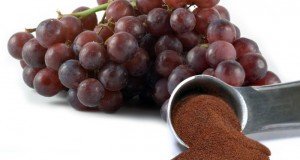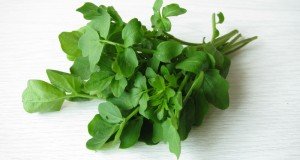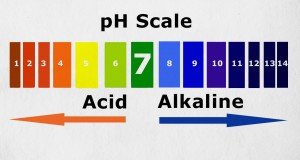Dietary fiber intake may reduce breast cancer risk, new study finds
 (NaturalHealth365) By now, we all know that fiber is good for us. You probably also know that its benefits have something to do with your gut, and you are right! But did you know that eating foods that are high in fiber can also help you prevent breast cancer?
(NaturalHealth365) By now, we all know that fiber is good for us. You probably also know that its benefits have something to do with your gut, and you are right! But did you know that eating foods that are high in fiber can also help you prevent breast cancer?
Widely accepted as truth, fiber helps good gut bacteria metabolize food and also helps to eliminate toxins throughout the colon. Eating the right amounts of dietary fiber can help you reduce the risk of obesity, heart problems and compromised immunity – the key component to avoiding cancer.
The unsung heroes of a healthy diet – how soluble and insoluble fiber work in your gut
Dietary fiber is an essential component of a healthy diet that is known to offer a range of benefits, including improved digestion, weight management, and heart health. There are two main types of fiber: soluble and insoluble.
Soluble fiber is a type of fiber that dissolves in water and forms a gel-like substance in the gut. It can be found in a variety of foods, including vegetables, fruits, nuts, beans, lentils, peas, and some grains like oats. When soluble fiber is ingested, it binds with water in the gut and slows down the digestive process, which can help to regulate blood sugar levels and promote feelings of fullness.
Insoluble fiber, on the other hand, is a type of fiber that does not dissolve in water and passes through the digestive system largely intact. Common sources of insoluble fiber include wheat bran, some forms of beans, and certain vegetables such as parsnips and spinach, as well as whole grains. Insoluble fiber plays an important role in promoting regular bowel movements by adding bulk to stool and helping it move more quickly through the digestive tract. This can help to prevent constipation and reduce the risk of colon cancer.
The connection between fiber and breast cancer
Both insoluble and soluble fiber have profound effects on breast cancer mainly because of their ability to help regulate hormones. Women who have breast cancer can have 1 million times higher estrogen levels in their breast tissue than healthy women.
Insoluble fiber helps to regulate glucose metabolism and insulin levels. According to some experts, insulin resistance and high blood sugar increase the risk of breast cancer by close to 300 percent!
How does fiber reduce the risk of breast cancer?
Insoluble fiber also helps play a role in risk reduction for estrogen-positive breast cancer. After estrogen is broken down by the liver, what is not used is sent to the colon to be eliminated. When there is very little or no insoluble fiber present in the large intestine to move things along, the estrogen has no choice but to recirculate into the body. This can lead to estrogen overload. In contrast, when there is enough insoluble fiber in the colon, excess estrogen can be eliminated properly.
Soluble fiber intake, in particular, has a major effect on the prevention of estrogen-positive breast cancer because of its role in hormonal distribution and because of the ways it interacts with the immune system.
In fact, some microbes in your gut have the specific job of fermenting soluble fiber found in legumes, fruits, and vegetables; the byproducts of this fermentation process help to nourish the immune system cells lining your colon. Happy, well-nourished immune system cells mean less inflammation in your body and less chance for cancer cells to grow.
In terms of fiber’s effect on estrogen-positive breast cancer, researchers are continuously discovering new connections. Here are some highlights:
- According to a study, a high-fiber diet can reduce estradiol and estrone levels in women
- High dietary fiber has been shown to decrease blood estrogen levels and decrease breast cancer risk, especially among post-menopausal women, according to a 2009 study conducted by the National Cancer Institute
- Eating vegetables, as well as fruits and raw nuts, decreased the pre-menopausal risk for breast cancer in a study conducted by the Department of Social and Preventive Medicine at the University of New York, Buffalo.
High-fiber foods are loaded with cancer-fighting properties
One such agent is lignans, found in high-fiber foods such as cruciferous veggies (broccoli, cabbage, cauliflower) and especially in flaxseeds. Lignans are phytochemicals that have a very powerful effect in neutralizing aggressive and prolific forms of estrogen. Lignans mimic naturally-occurring estrogen at cellular receptor sites. There, they can take the place of more aggressive forms of estrogen, such as xenoestrogens which are introduced through chemical exposure and bad eating habits.
A 2005 study conducted by the University of Toronto and published in the Journal of Clinical Cancer Research gave patients a 25-gram flaxseed-containing muffin (containing 5 tablespoons of flax) every day over the course of 32 days. The researchers then did an analysis of breast tissue after surgery and discovered that tumor growth had been reduced by up to 71% in those who ate the muffins compared to the control group (who did not).
According to study researchers: “Dietary flaxseed has the potential to reduce tumor growth in patients with breast cancer.”
If you are on a healthy breast journey, you have a lot of tools to keep in your breast cancer prevention and healing toolbox. Eating plenty of high-fiber fruits, vegetables, and flax and moderate amounts of legumes in order to boost your immune system, regulate your hormones and keep things running smoothly in your gut is definitely one of them.
Discover the best ways to avoid the threat of cancer: Own the Stop Cancer Docu-Class, an educational program created by Jonathan Landsman.
Sources for this article include:
NIH.gov
NIH.gov
Medlineplus.gov
Nature.com
NIH.gov
NIH.gov
NIH.gov
NIH.gov











